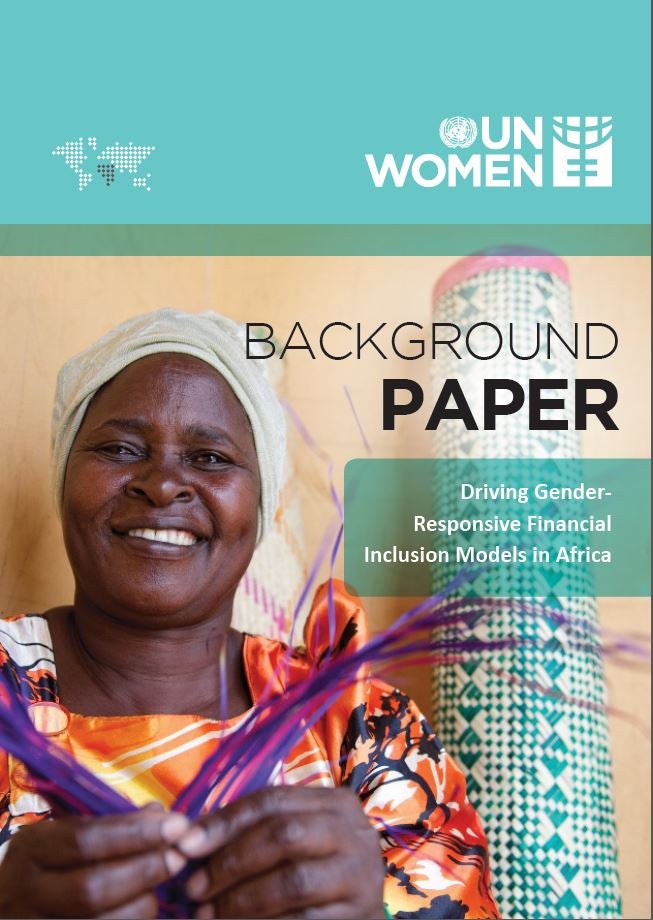
Background paper on driving Gender-Responsive Financial Inclusion Models in Africa

This background paper highlights the current situation regarding gender responsive financial inclusion in Africa. It also highlights the key barriers that contribute towards creating and sustaining the gender gap in financial inclusion, including collateral challenges; the gender-blind approach to financial inclusion by financial institutions; asset ownership challenges among women; uncompetitive and high interest rates and bank charges offered by financial institutions; poor documentation and business history for accessing financial loan products by women entrepreneurs; challenges of formalization of businesses by women entrepreneurs among others. The paper also outlines concrete actions that all stakeholders and duty bearers should take to address the gender gap in financial inclusion in Africa.
This paper reports that financial inclusion for women, specifically access and usage of financial services and products is increasingly attracting great attention. Research and data reveal a trend in reducing the gender gap in access to and utilization of financial services with the introduction of digital literacy and mobile financial services and products in Africa. Although women are lagging behind men, women’s participation in financial inclusion has improved economic growth and better living standards in society. A synopsis is given of entrepreneurship and financial inclusion in Africa and of the methods through which financially excluded women could explore to improve their participation and benefit. Financial position and participation of women in financial inclusion were the focus of discussions by different actors, women entrepreneurs and stakeholders in a workshop gathering at the SEED Africa symposium held in Nairobi in 2016. The substance of the background paper is drawn from those discussions. The emerging good practices and innovative solutions together with the valued comments from participants are published herewith.
View/ Download: English